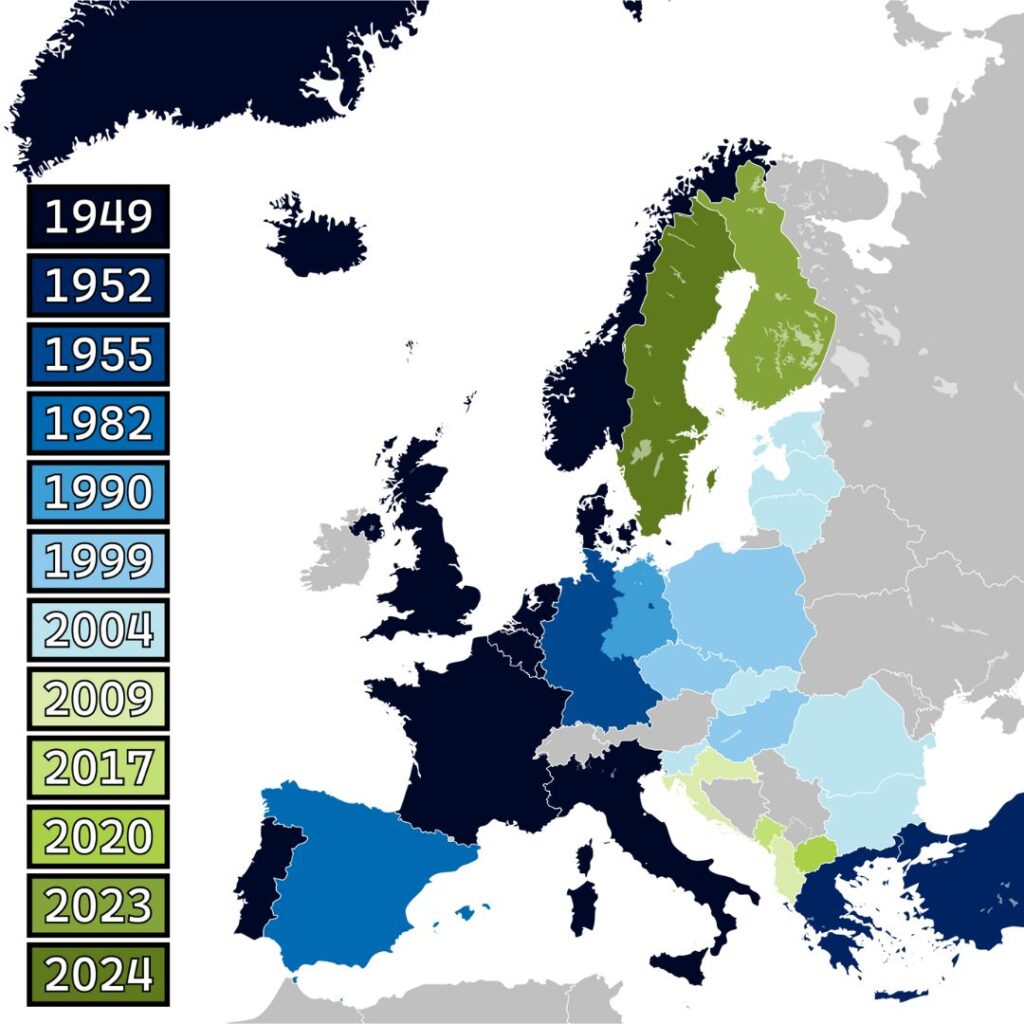Promises fade. Borders don’t.
NATO Expansion: A Timeline That Redrew the Map
NATO was born in 1949 as a defensive military alliance. When the Cold War ended, many believed it would fade into strategic irrelevance. Instead, it expanded. What began as a hedge against the Soviet Union became a slow-moving fault line between Russia and the West. Below is a factual look at what happened, when, and why it matters now.
- 1990: Verbal assurances were given to Gorbachev that NATO would not expand “one inch eastward.” No treaty was signed.
- 1999: Poland, Hungary, and the Czech Republic joined. Russia issued strong objections.
- 2004: Seven more countries joined including the Baltics. Russia saw this as a strategic encirclement.
- 2008: At the Bucharest Summit, NATO declared that Ukraine and Georgia “will become members.” Russia called it a red line.
- 2008 (later): War broke out between Russia and Georgia. Moscow occupied Abkhazia and South Ossetia.
- 2014: After Ukraine’s Euromaidan revolution and Yanukovych’s ouster, Russia annexed Crimea and backed separatists in Donbas.
- 2021–early 2022: NATO-Ukraine military cooperation increased, weapons shipments surged, and Ukraine’s membership ambitions were reaffirmed. Putin publicly warned NATO was crossing red lines. Peace talks failed just before the invasion.
- 2022: Russia invaded Ukraine. Professors John Mearsheimer (University of Chicago) and Jeffrey Sachs (Columbia University) were among those who argued that NATO’s eastward push, especially into Ukraine, was the primary trigger. They cited broken promises, military aid buildup, and red-line warnings ignored.
- 2023–2024: Finland and Sweden applied and were accepted into NATO. Russia warned of countermeasures.
- 2025: NATO’s logistical footprint near Russia’s borders has grown. Ukraine is not a formal member but receives arms, training, and intelligence.
Critics of the expansion, including George Kennan and former US defense secretaries, warned this path would corner Russia. A 2008 cable by then US ambassador Bill Burns was titled “Nyet Means Nyet.” It noted Russia viewed NATO in Ukraine as an existential threat. He wrote, “Ukraine’s accession is the brightest of all redlines.” His warning was ignored. Burns later served as CIA Director from 2021 to 2024.
After 2014, NATO continued building partnerships with Ukraine. Joint drills. Military aid. Intelligence sharing. The West believed Ukraine had a sovereign right to align itself. Russia viewed that as naïve, provocative, or both. A compromise was never found.
Some hoped diplomacy could resolve the crisis. But according to Israeli and Turkish mediators, peace talks in March 2022 were derailed when US and UK leaders told Zelensky to walk away. Instead of a settlement, the war escalated.
What Expansion Left Behind
The expansion narrative is complex. For the West, it was about security and democracy. For Russia, it was about survival. This clash of strategic visions turned a slow-moving diplomatic debate into open warfare. What began in speeches and summits now plays out in trenches and drone strikes.
The idea that NATO was simply a shield has been challenged. When borders move, threat perceptions change. To Russia, NATO is not just a club. It is an armed network backed by the world’s most powerful military and nuclear arsenal. Geography and history do not forget this.
The war is not over. Ukraine is fighting for sovereignty. Russia is fighting to push NATO back. Meanwhile, Washington, London, Brussels, and Moscow continue to frame the conflict through irreconcilable lenses.
Whether you see NATO as a guarantor of peace or a provocation depends on where you stand. Either way, the expansion happened. The reaction followed. And the outcome is still unfolding.
In uncertain times, financial independence matters. One way to stay sovereign is to understand the systems that seek control.

